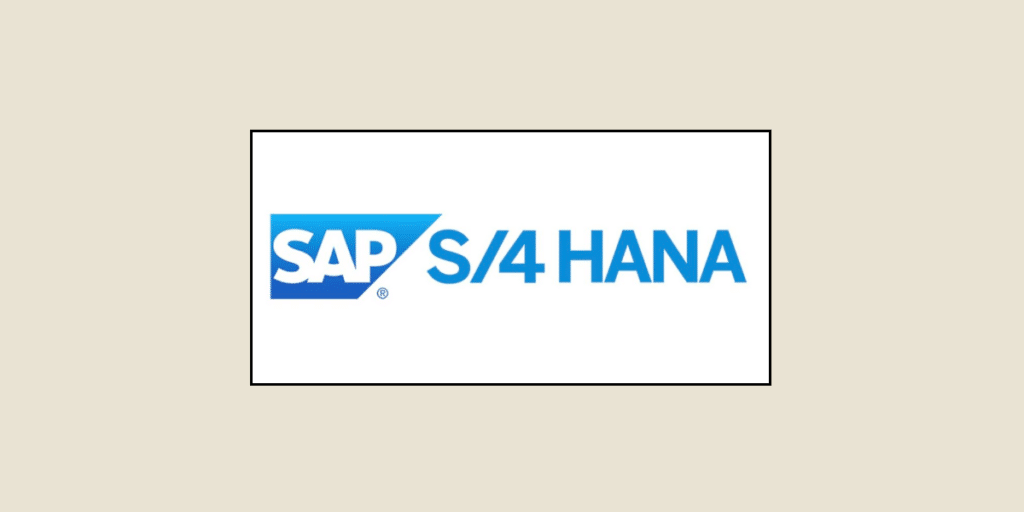With SAP S/4HANA, the SAP ERP system takes business process optimization to the next level. Leveraging artificial intelligence and an in-memory database, users gain a comprehensive toolkit to efficiently manage their workflow and boost productivity. Discover this solution.
What is SAP S/4HANA?
Launched in 2015, SAP S/4HANA is a next-generation enterprise resource planning (ERP) system. Specifically, it represents the fourth generation of SAP products.
Entirely based on the in-memory database SAP HANA, SAP S/4HANA provides businesses with a single source of truth for all their data, irrespective of the tools used, sectors, or processes involved.
Moreover, SAP S/4HANA is equipped with intelligent technologies, enabling it to transform workflows from customer orders to task planning, invoice processing, and supplier payments.
These technologies aim to assist businesses in their digital transformation. The results are notable: in 2023, SAP S/4HANA Cloud was named the leader in cloud ERP for service- and product-focused companies by the Gartner® Magic Quadrant™.
SAP S/4HANA and other SAP system products
The SAP universe is complex. With various versions, modules, databases, it’s easy to get lost. Here is a summary of the differences between SAP S/4HANA and the main SAP products.
SAP ECC: This is an on-premise ERP system. Unlike S/4HANA, which operates solely on the HANA database, the SAP ECC Business Suite supports other relational databases like Db2, Oracle, or Informix.
Compared to this version, the benefits of SAP S/4HANA are numerous:
- much faster response times;
- the capability to perform complex analyses;
- simplification of the data model and system mapping;
- use of machine learning and artificial intelligence.
Good to know: By 2027, SAP may cease maintaining this ERP solution. Businesses should consider migrating to S/4HANA.

The different versions of S/4HANA
Besides the different products, SAP S/4HANA is available in different versions: on-premise or cloud.
- In its on-premise version, SAP S/4HANA corresponds to the SAP Business Suite, offering a complete range of ERP services for all departments and processes. Here, SAP has launched various improvements each year (1610, 1709, …). Companies can decide on upgrades based on the desired level of innovation. For instance, the new generation of the HANA 2.0 in-memory database enhances data security, provides machine learning for optimized automations, predictive analytics, etc.
- In its cloud version, S/4HANA offers streamlined functionalities for marketing, finance, or professional cloud services. To benefit from a comprehensive ERP, companies can select the global package with SAP S/4HANA Enterprise Management Cloud.
Regardless of the chosen version, companies also benefit from other SAP products (Fieldglass, SuccessFactors, Jam, Hybris, and Ariba) which are automatically integrated into SAP S/4HANA on-premise and cloud.
What are the functionalities of SAP S/4HANA?
Integration of artificial intelligence
The strength of SAP S/4HANA is its AI integration, which allows for improved automations and predictive analytics.
For example, with the new versions of SAP S/4HANA, it is possible to:
- quickly generate group reports;
- simulate the financial impact of business decisions;
- simulate goods outputs following a customer order;
- anticipate future sales with predictive models based on historical data or market trends;
- automate supplier selection;
- identify risk factors related to employee departures; etc.
Sales, logistics, finance, human resources— all departments benefit from the technological advancements of SAP S/4HANA.

In-memory database
Unlike its earlier versions, SAP S/4HANA fully relies on SAP HANA, the leading in-memory database on the market. The advantages are substantial:
- Processing speed: In-memory processing allows for extremely fast response times for queries and analyses. Users can access and analyze data in real time.
- Simplified data model: SAP HANA combines transactional and analytical processing capabilities in a single database, reducing IT infrastructure complexity.
- Parallel processing: It is possible to process multiple queries simultaneously for enhanced performance.
- Advanced application development: SAP HANA also serves as a platform for designing applications. With integrated tools and programming languages (such as SQLScript, R, and Python), it is possible to develop advanced analytical applications directly on the database.
A variety of modules
SAP S/4HANA aims to cater to all businesses by offering highly comprehensive modules for all sectors. Depending on their needs, companies can choose global solutions (Enterprise Management Cloud).
But they can also opt for individual modules. Accounting, sales, production, marketing, logistics— all tasks can be managed through the ERP software, regardless of complexity.
To help organizations efficiently use this ERP software, mastery of data management is a significant advantage. You can acquire this valuable skill by joining DataScientest.










